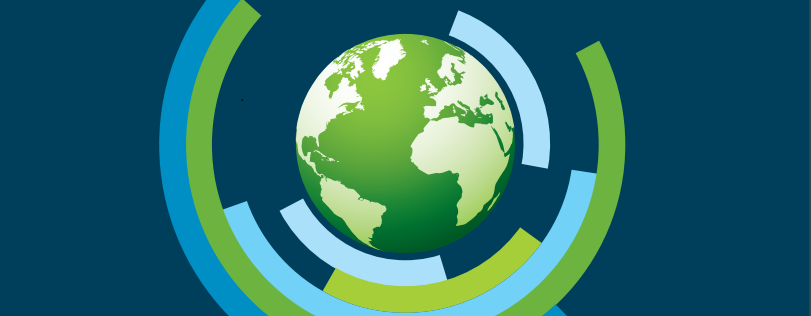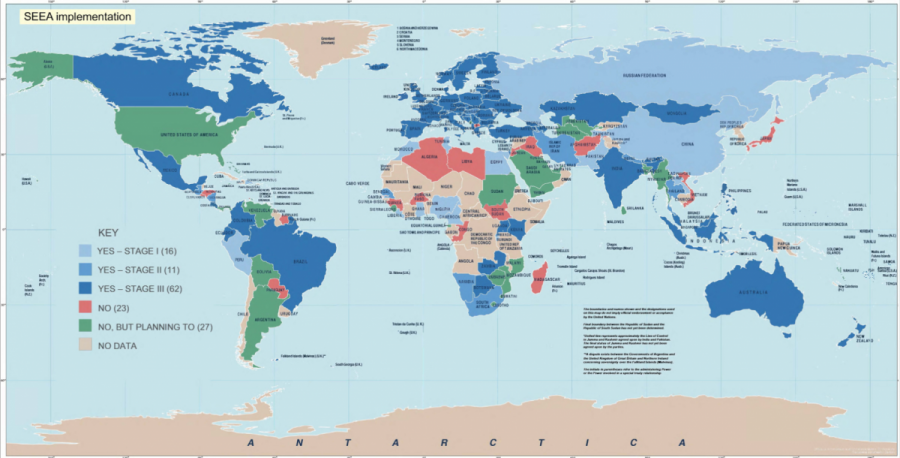Recent Progress and Trends in Global SEEA Implementation

The results of the periodic Global Assessment of Environmental-Economic Accounting and Supporting Statistics are usually eagerly anticipated, as they act as a barometer for the overall progress of the SEEA community. The results of the 2020 Global Assessment, administered under the auspices of the UN Committee of Experts on Environmental Economic Accounting (UNCEEA), show that there is much to be proud of. At the same time, it pinpoints specific areas where the community can focus future efforts.
The Global Assessment was sent to UN Member States and territories in late 2020. Designed to assess the status and progress of SEEA implementation, the Assessment also provides data for SDG indicator SDG indicator 15.9.1. In 2020, the Committee agreed on a new, more nuanced definition of implementation, which was reflected in the 2020 administration of the Global Assessment. Implementation is measured in three progressive stages: 1) compilation (including pilot compilation); 2) compilation and dissemination; and 3) regular compilation and dissemination.
According to the 2020 Assessment, 89 countries have implemented the SEEA. Of these 89 countries, 62 (70 per cent) publish at least one account on a regular basis (stage III); 11 (12 per cent) publish their accounts on an ad-hoc basis (stage II); while 16 countries (18 per cent) compile, but do not yet publish their accounts (stage I).
This marks a significant increase in the overall number of countries implementing the SEEA since the last Assessment, with the number of countries implementing the SEEA in 2020 increasing by 29 per cent compared to 2017. Much of this progress has taken place in developing countries, which exhibited a 47 per cent increase, compared to a 14 per cent increase in developed countries.

*See note at bottom of the page.
While there has been notable uptake of the SEEA over the past three years, the UNCEEA did fall slightly short of its implementation targets of 100 countries implementing the SEEA Central Framework (SEEA CF) and 50 countries implementing the SEEA Ecosystem Accounting (SEEA EA) by 2020. In particular, all 89 countries implementing the SEEA implement the SEEA CF and 34 of those countries also implement the SEEA EA. However, 25 countries indicated in the Assessment that they plan to implement the SEEA CF, and 13 countries indicated that they plan to implement the SEEA EA. Many countries planning implementation were in regions which show gaps in SEEA implementation, notably Africa and Latin America and the Caribbean. Increased technical assistance in these regions could boost implementation and help meet the targets within the next few years. Recent developments, such as the establishment of SEEA focal points in countries and the development of communities of practice, such as the Africa Community of Practice, will also aid with these efforts.
Finally, the Assessment gathered valuable information on the different SEEA-related policy priorities in countries. For developing and developed countries alike, the most frequently cited policy priority was climate change. Other frequently cited priorities for developed countries included circular economy and green growth, while developing countries cited biodiversity and protected areas as priorities. In terms of the use of the accounts, the vast majority of countries indicated that they used SEEA accounts for both Sustainable Development Goal (SDG) reporting and to inform national policies.
More details can be found in the Assessment report.
*Note: The designations employed and the presentation of material on this map do not imply the expression of any opinion whatsoever on the part of the Secretariat of the United Nations concerning the legal status of any country, territory, city or area or of its authorities, or concerning the delimitation of its frontiers or boundaries. Final boundary between the Republic of Sudan and the Republic of South Sudan has not yet been determined. Final status of the Abyei area is not yet determined. * Non-Self-Governing Territory. ** Dotted line represents approximately the Line of Control in Jammu and Kashmir agreed upon by India and Pakistan. The final status of Jammu and Kashmir has not yet been agreed upon by the parties. *** A dispute exists between the Governments of Argentina and the United Kingdom of Great Britain and Northern Ireland concerning sovereignty over the Falkland Islands (Malvinas).
